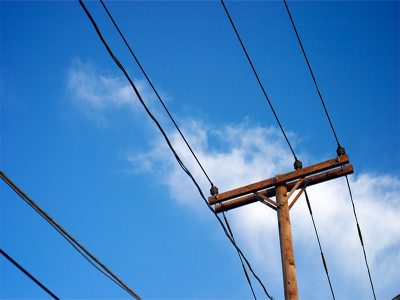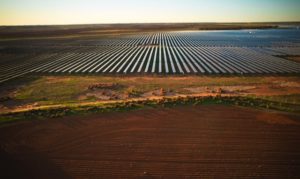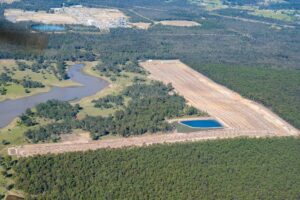The Energy Networks Association has responded to RenewEconomy’s story on proposed compulsory connection fees – and penalties to leave the grid – by saying that these options are not its preferred solution to its revenue problems.
The ENA was not happy with the portrayal by RenewEconomy of its preferred choices. Rather than painting the picture as “we want compulsory fees and penalties for leaving the grid” – unless regulators agree to changing rules on depreciation (which we explain later), the ENA would much rather us have painted the picture as: “We want the regulator to change the rules on depreciation, otherwise the only options may be compulsory fees, etc”.

We think it’s a moot point, because it amounts to the same thing, but we understand why the ENA didn’t like the emphasis we put on it. It’s similar to the old threat by generators that things like a carbon price and renewable energy would cause the lights to go out. It’s scare tactics. The reaction by readers was damming and gives just a little taste of the response that such a measure would have. (And there are some very funny analogies that are worth reading).
But the fundamental point is this, and it was emphasised by Paula Conboy, the head of the Australian Energy Regulator, in a speech to an ENA function in Brisbane yesterday, where the ENA released its options paper: the markets are changing, and regulators and networks need to change with it.
That can mean one of two things: erecting walls higher and higher (as some suggest we respond to climate change) or address the fundamental issue – technology and business models that are being rapidly superseded.
There is a huge sunk (spent) investment in networks which should be incorporated into future energy systems. It makes sense. But it comes down to how much of that investment was justified. That influences the pricing, and pricing that infrastructure is the key. Nobody is seriously suggesting that everyone should leave the grid, but unless incumbents adapt, enough people might do so to cause serious problems.
But the last thing that the networks – and their government and private owners – want to do is to write down the value of their assets. They are genuinely worried they will not get their money back. But, as some argue, they probably should not have been allowed to spend that much money in the first place.
As Conboy said: “We are seeing a shift from a centralised electricity supply model to one where consumers will have greater potential to control how their electricity is delivered and consumed.
“New products and services are emerging, including distributed generation and storage options, demand management services such as direct load control, and new business models for selling energy.
“In the past, our regulatory frameworks have generally been able to accommodate or adapt to changes in market conditions. Will this remain the case going forward?”
The AER is under attack from network operators, particularly in NSW, because it has rejected their proposed expenditure plans for the next five-year regulatory period. It says they are way too high, and wants them reduced by $5 billion. The networks – government-owned and up for lease – want to be allowed to spend that money, and pass on the costs (estimated at $500 per household) for fear of blackouts and/or job losses.
Which brings us back to the ENA’s preferred model of accelerated depreciation. Right now, the way the system works, networks are only allowed to “back-end” their depreciation, towards the end of the asset life, which is normally around 30 years.
Accelerated depreciation allows the networks to front end, and essentially recoup more of their investment at the outset. Not a bad move given that the future of the network assets is not as rock solid as it might once have been.
The ENA argues that because interest rates are low, this is a good time to do it. Low interest rates should mean lower financing costs to network operators and therefore lower bills to consumers. But the upshot is, with more rapid depreciation, the costs would be higher than they would otherwise be.
This is a deliberate ploy by the networks to have their assets paid off (by consumers) as quickly as they can. Here’s why, as they explain in their own words:
“If current customers are expected to use the network more heavily than future customers are likely to, current customers should pay relatively more than future customers.”
And why are customers in the future less likely than current ones to use the network? Because of distributed generation such as battery storage.
“An example of this scenario arising is circumstances in which distributed generation and storage provides a significant proportion of network customers with an option to fully or partially bypass the grid,” the ENA writes.
“In this case, the existing regulatory approach would suggest the recovery of total depreciation charges from remaining grid customers. This would effectively represent a ‘double penalty’ likely to fall mostly upon customers with fewer options to bypass the grid.”
So, in the name of inter-generational equity, the ENA wants to get as much money from the grid users now, before that use declines. If only Kodak had cottoned on to that – it could have charged more for its photographic films to maximise revenues before digital cameras came into play.
And there is one big problem. The technology competitors, the developers of battery storage and energy management systems, are moving in the opposite direction.
One of the reasons that solar PV, and now battery storage, was so expensive in the early years was because their developers were keen to recoup their R&D expenses as quickly as they could.
Tesla has turned that model upside down, and is now happy to recoup that R&D in a decade or two. Its competitors will have no choice but to follow. For the networks, that is a major challenge.
Bruce Mountain, from CME Australia, says the networks want all of their money back, “in spite of fact that large amounts of money was spent in the past and was not needed.” That is known as “gold-plating”. The networks insist that the consumer should pay for this expenditure, needed or not, and not the management owners.
Hence the push to get their money back quicker and depreciate the assets more quickly. “The prospect of substantial stranding is increasing each day,” Mountain says, before adding that changing the depreciation measures would be a major adjustment to the regulatory environment. He suspects that the move is being driven by prospective buyers of NSW network assets, and the private owners in South Australia and Victoria.
Claire O’Rourke, from Solar Citizens, says: “Imposing charges like this could accelerate the so-called death spiral, which will result in a very expensive grid for everyone who ends up still connected to it.
“It will wind up causing very serious social equity issues for those people who are left behind. The last thing the network operators should do is to push for something that would accelerate this outcome.”
It’s going to be a fascinating battle.










